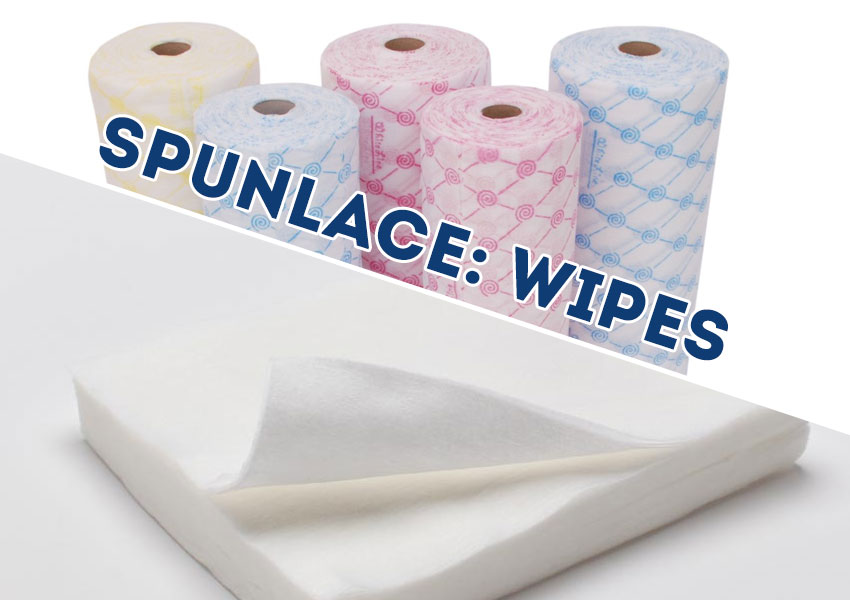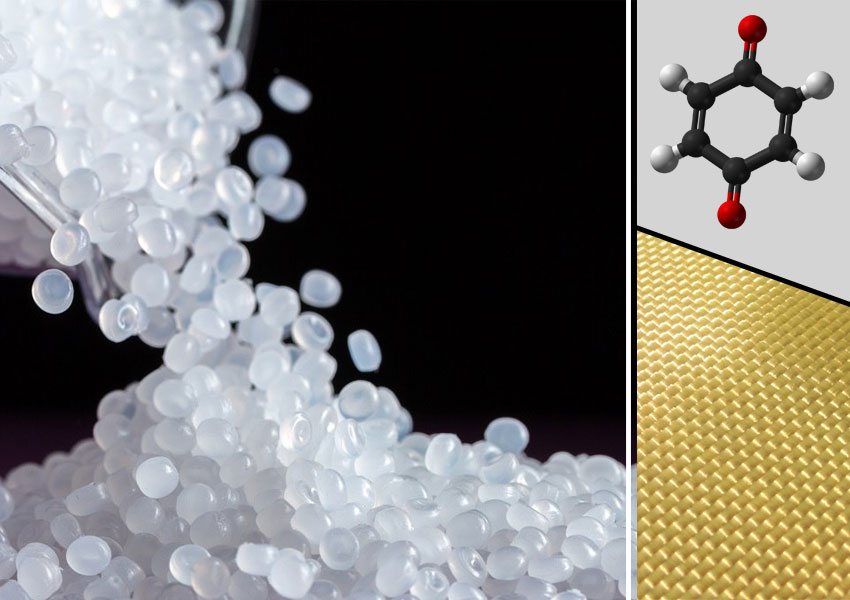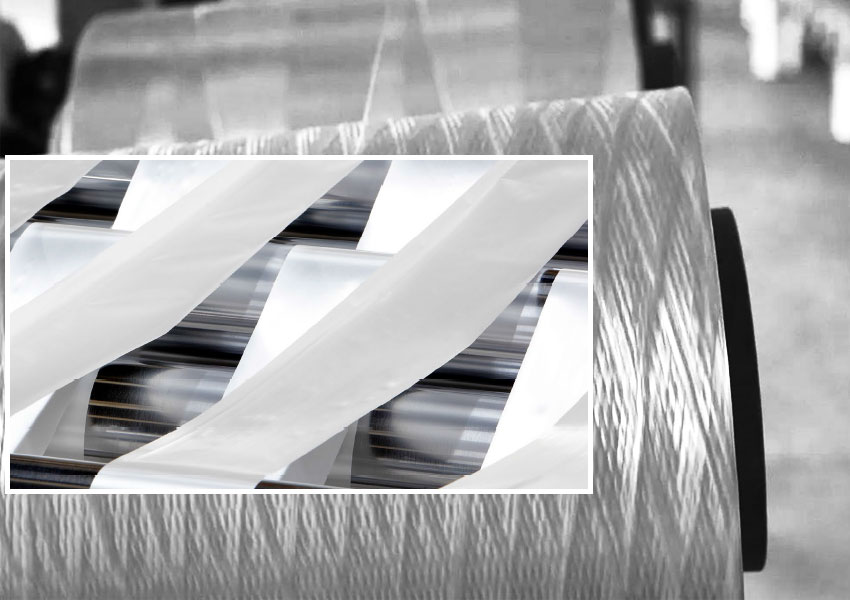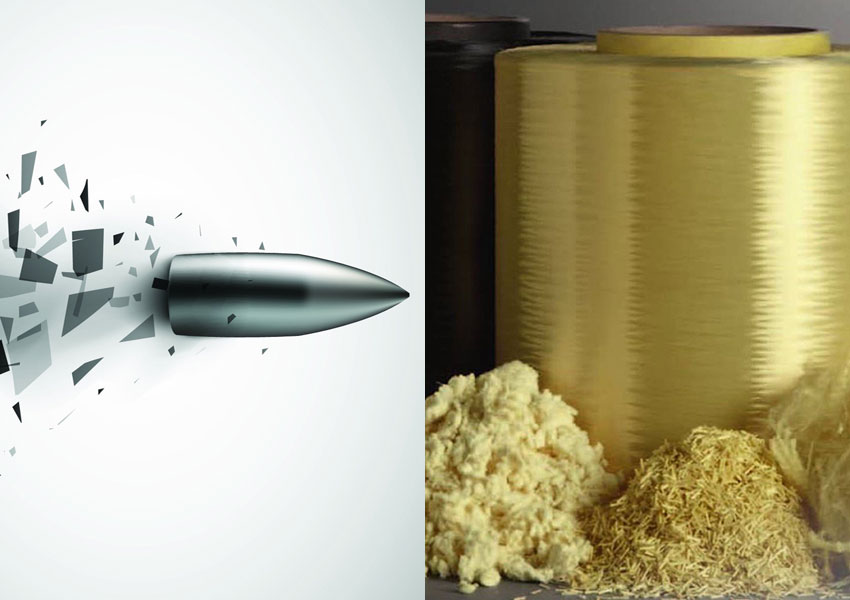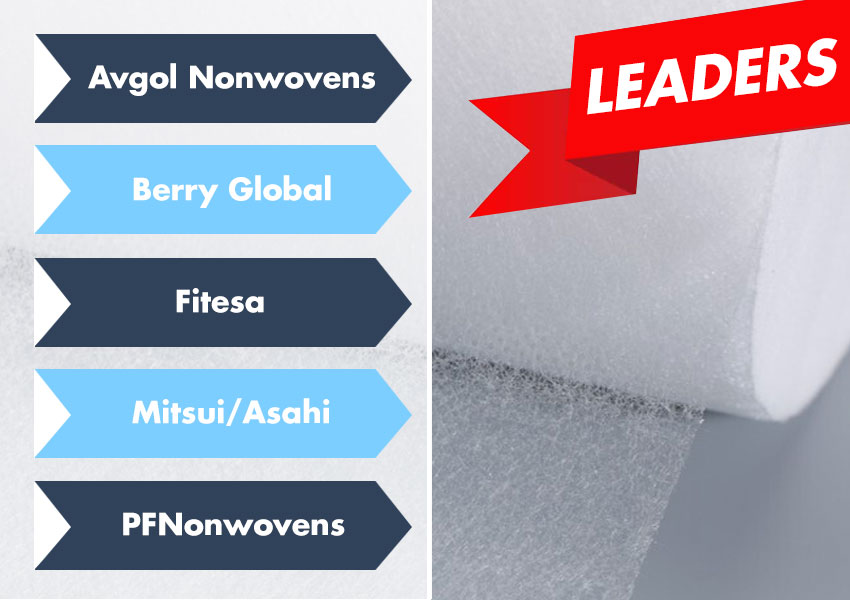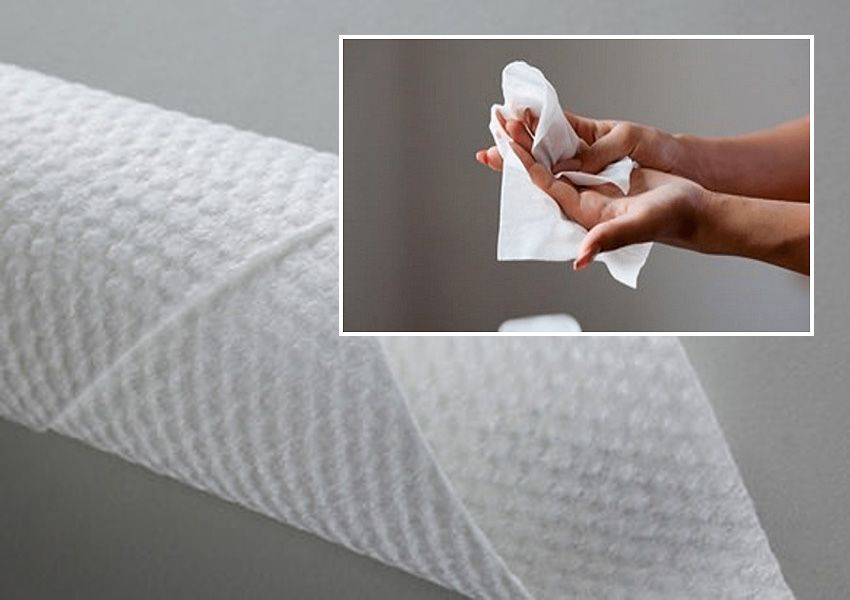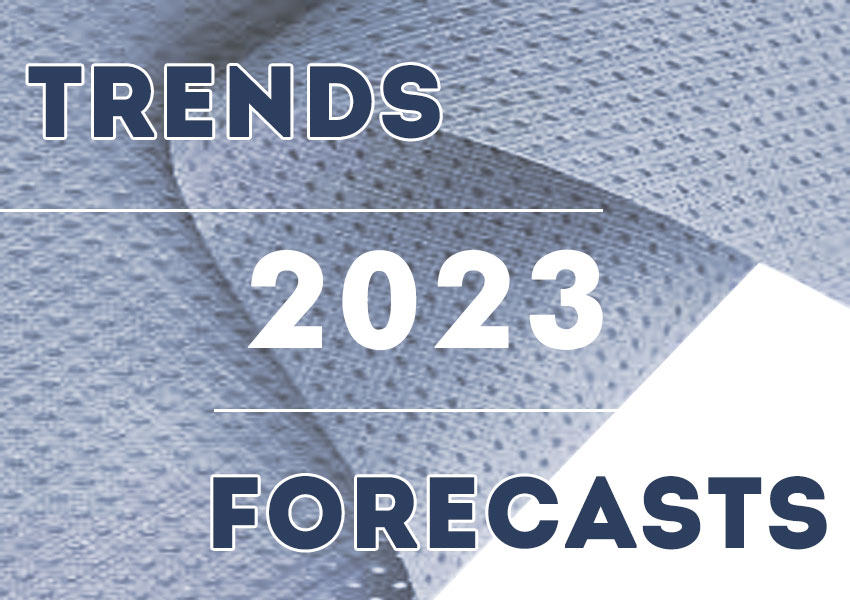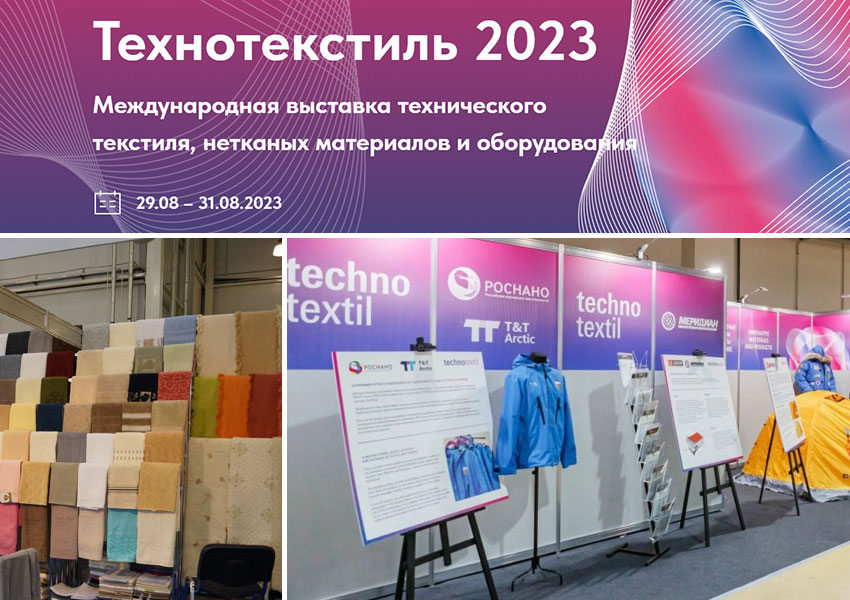Publications
Last
Advertisement
Partners


Global capacities of nonwovens "spunbond/spanmelt": market and production

The market is going through a period of opportunities and challenges
After the rise caused by Covid-19, the global nonwovens business is currently overcoming the post-pandemic downturn. Gone are the conversations about face masks, quarantine, isolation, hospitalization, respirators, lab coats, testing, travel restrictions and vaccines.
The impact of Covid on the global market of polypropylene nonwovens "spunlaid" in 2020 was significant. The normalization of demand has begun, in particular, among those commodity groups whose demand during the peak of the pandemic was characterized by increased attention. The surge in demand for masks, bathrobes and napkins peaked in mid-2021, or about 18 months after January 2020. Since then, the demand for nonwovens in these product categories has declined, and since the beginning of 2023 has fallen significantly. In the medical segment, since the third quarter of 2022, significant stocks of rolled nonwovens and medical products have increased in some regions of the world.
The global spunbond/spanmelt polypropylene nonwovens market is currently facing a period of both opportunities and challenges. In addition to the short-term economic shocks caused by the war between Russia and Ukraine, falling birth rates in most regions of the world, rising inflation, rising interest rates and ongoing geopolitical tensions may lead to a further decline in global demand. Noticeable progress has been achieved and continues to be achieved in the use of sustainable raw materials in the production of nonwovens, however, the implementation of this concept may face obstacles, since States are determined primarily to solve the problems of wars and the economy, and not problems related to concern for the environment.
Global capacity/demand
In 2022, about 240,000 tons of new nonwovens production facilities were put into operation, represented mainly by Reicofil 5, technologiesFare and Chinese manufacturers. Thanks to these new installations, the total global capacity has increased to 5,351.5 thousand tons. By the end of 2022, capacity utilization has decreased compared to the peak value of mid-2022. In 2023, another 191,000 tons of new capacity will be put into operation, resulting in a global capacity of about 5,542.5 thousand tons.
Another 110,000 tons of new capacity will be commissioned in 2024. Thus, the total global production capacity of polypropylene nonwovens will increase to approximately 5,642,5 thousand tons. Demand and year-on-year growth will normalize in 2023 and return to normal demand drivers. It is expected that the low birth rate in almost all regions of the world will affect the demand for baby diapers, and the annual growth in demand for adult incontinence products will be from 5 to 6% during this period.
It is expected that the average annual growth in global demand in tons in the period from 2022 to 2027 will be about 5%. This forecast is sensitive to macroeconomic factors, epidemics, diseases and global unrest. Demand growth will be highest in South Asia (India) and Africa, followed by the Asia-Pacific region and China. Demand growth will be more moderate in the Americas, Greater Europe and the Middle East.
It is assumed that by 2024 there will be an oversupply of nonwovens in some regions of the world, since the full effect of new capacities will be felt on the market. Investments in factories and equipment are expected to slow down in 2024 due to uncertainty caused by excess capacity and rising investment costs. Compensating for this increase in capacity will be the likely shutdown of earlier-generation technologies re-commissioned during the outbreak of the pandemic. Some manufacturers will undertake modernization of existing equipment to expand its capabilities. Raw material costs will remain unstable and disproportionate between regions.
Market capacity and demand in North America
During 2022-2024, 131,500 tons of new capacities are expected to enter the market. This increase in capacity is mainly due to five new Reicofil 5 installations during this period, including the line ordered by Avgol, which was supposed to be installed in Russia, but was moved in the United States after the outbreak of hostilities between Russia and Ukraine. This additional increase in production capacity in North America will put pressure on capacity utilization during this period.
Production capacity in North America was fully loaded in the first half of 2021, but began to decline in the third quarter due to a slowdown in demand caused by the pandemic. Demand continued to decline moderately during 2022 as medical supplies increased due to reduced demand and delivery times of previously ordered goods. The reduction of stocks of medical devices based on nonwovens will continue for most of 2023. The demand for hygiene items will be static, and the demand for baby diapers will correspond to low birth rates on an annual basis. The demand for products for adults suffering from urinary incontinence will grow by about 4% per year, which is lower than in previous periods. The demand in the markets of construction and technical applications can be attractive. During this period, capacity utilization will decrease as new capacities are put into operation and previously decommissioned capacities are rationalized. By the end of 2024, the design capacity will be 896.9 thousand tons.
Market capacity and demand in South and Central America
In South America, capacity utilization was slightly lower in 2022 than in 2021, as demand for PPE related to Covid decreased, and Fitesa Brazil in 2022 realized the full capacity of the machine Reicofil 5 (R5), put into operation in the second half of 2021. Several small and medium-capacity Chinese production lines have been put into operation in the region. The demand for disposable hygiene products and other segments of the use of nonwovens is at a low to moderate level. The growth in demand in the market of adult incontinence care products is still higher than in other categories of hygiene products. Additional capacities will be added until 2026 to meet the growing demand and modernize the existing technological base. At the end of 2024, the design capacity for the region will be 354.0 thousand tons.
Europe, including Turkey and Russia. Capacity and demand
In Greater Europe, capacity increased by 35.5 thousand tons in 2022 due to the implementation of the full capacity of new lines commissioned by Union Industries (Italy) and Innovatec (Germany), as well as the introduction of new capacities Master Plast (Hungary) and Gulsan (Turkey). The capacity will increase by 30.0 thousand. tons in 2023 with the commissioning of the line by Fitesa and the full realization of the capacity of the new line Gulsan, commissioned by the company in 2022. The capacity will increase again in 2024 by 10.0 thousand tons due to the full realization of the capacity put into operation by Fitesa in 2022. Capacity utilization in Greater Europe is uneven among producers and depends on exports. Capacity utilization was moderate for most of 2021 due to the outbreak of the pandemic and decreased in the last months of the year. In 2022, demand dropped further to more normalized pre-pandemic levels. Demand in the medical segment will decrease in 2023 as stocks decrease. Capacity utilization in Greater Europe in 2023–2024 will remain low, as production capacity outstrips demand growth in both regional and export markets. By the end of 2023, the design capacity in the region will be 1,161 thousand tons and 1,171 thousand tons in 2024.
Middle East and Africa. Market capacity and demand
In the Middle East and Africa, the surge in demand associated with the pandemic has provided much-needed higher capacity utilization in the region from 2020 to the first half of 2021. Excluding the increased demand associated with Covid, the high level of capacity utilization in the Middle East depends on exports from Europe and South Asia. Based on our assessment of demand and import/export, it is expected that capacity utilization for manufacturers in the Middle East and Africa will remain attractive in 2023–2024, but it will be pressured by the introduction of new capacities by companies Gulsan (Egypt) and PFNonwovens (South Africa) during this period. Iran is not included in the analysis of the Middle East region. Installation by Baftineh advanced technology from Reicofil® In Iran in the second half of 2020, it allowed to modernize the company's technology platform and expand its portfolio. Technologies in the Persian Gulf countries are becoming obsolete. Company SGN (Saudi Arabia) has announced its intention to install the R5 machine in Saudi Arabia in 2024/2025.
In North Africa, Gulsan (Egypt) plans to put into operation the Reicofil 5 line with a passport capacity of 25,000 tons in the first quarter of 2023. This installation brings the number of lines operated by Gulsan in Egypt to three. PFNonwovens will add 15,000 tons of capacity with the installation of R5 in 2023 in South Africa. It is expected that by the end of 2024, the design capacity in the Middle East will be 192.0 thousand tons. In all of Africa, the design capacity will be 197.0 thousand tons in 2024.
Market capacity and demand in South Asia
In South Asia, demand continues to grow as the penetration of disposable nonwovens into the market continues to increase. At the same time, the power increased. From 2021 Toray, Global Nonwovens, Manjushree Spntek and other manufacturers have added about 103 thousand tons of new capacity in India, which is 52% more than in 2021. Toray commissioned a new line Reicofil 4s with an annual passport capacity of 20,000 tons at a new plant in India in the fourth quarter of 2020. Global Nonwovens commissioned the R5 line with a capacity of 30.0 thousand tons in mid-2022. This is the third line of Global. Global was the first company in India to install a high-performance nonwovens production line in the region in early 2015. Avgol has commissioned the upgraded Reicofil 3.1 line, moved from Israel to a second new plant in India in the second half of 2022. Manjushree has commissioned a new R5 line in India. This line has a capacity of 15,000 tons and is designed to serve the health and hygiene markets. More capacity is expected to be installed in India by 2026 as demand continues to grow. Capacity utilization in the region remains high and is complemented by imports from the Middle East, Asia-Pacific and China. By the end of 2024, the design capacity in the region will be 271.5 thousand tons.Market capacity and demand in the Asia-Pacific region
In 2023, the largest producers in the region are Mitsui/Asahi (Japan, Thailand - 148.0 thousand tons), Toray (South Korea, Indonesia - 103.0 thousand tons), Fibertex (Malaysia - 96 thousand tons) and Fitesa/CNC (Thailand - 69.0 thousand tons). Mitsui and Asahi plan to merge in October 2023, creating the fourth largest company for the production of polypropylene nonwovens "spunlaid" in the world. Asahi commissioned a 15,000-ton line in the third quarter of 2021, the full capacity of which was realized in 2022. The company Fibertex (Malaysia) commissioned the R5 line in the first quarter of 2022 with a passport capacity of 15,000 tons. The capacity of this line was fully realized in 2023. New lines have been put into operation Cobes Industries in Myanmar in the third quarter of 2022 and Hanil (South Korea). The demand for hygiene products in the region is growing in an attractive way, especially if we exclude Japan, whose market is fully developed. The increase in capacity reflected the growth in demand. By the end of 2024, the design capacity in the region will be 512.0 thousand tons.
Capacity and demand in China
In China, 41,500 tons of new capacities will be put into operation in 2023 PP SB/SMS. This follows the commissioning of 89.0 thousand tons in 2022 and 67.5 thousand tons in 2021. Companies Allmed, Jofo Wuxi, Berry Global, Cobes Industries and Guan Hong plan to put into operation exclusively the R5 technology. China seems to be preparing to add much more new capacity for the production of nonwovens for surgical gowns and sheets for supplies to foreign markets, despite the chatter about localization. Although more capacity is expected to be installed in China in 2024 –2026, the annual growth in demand for Chinese-made polypropylene nonwovens will decrease. An increase in capacity together with a decrease in demand will affect the use of capacity in the future. The design capacity in the region at the end of 2024 will be 2,004 thousand tons. There is a significant oversupply in China and the industry is very dependent on exports to ensure the reasonable use of existing production capacity.

